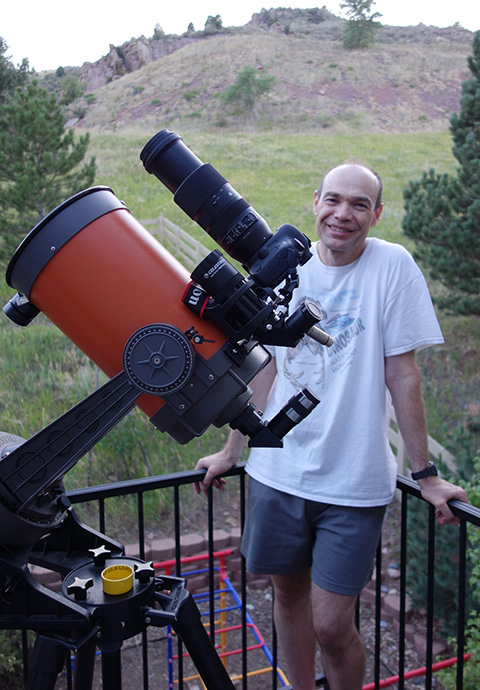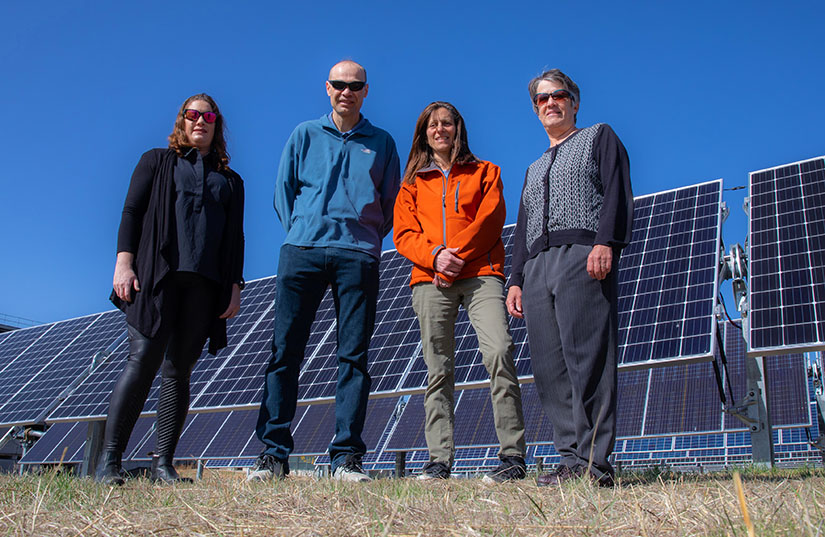Distinguished Researcher Dirk Jordan Knows the Value of Long-Term Reliability
National Renewable Energy Laboratory (NREL) Distinguished Researcher Dirk Jordan likes taking a long view in life. It is a trait that manifested at a young age, perhaps as a result of what he calls his “curiosity gene.”
Growing up outside of Heidelberg, Germany, he recalled sitting outside one summer night with his family when a shooting star suddenly went streaking overhead. “Someone said, ‘Oh, there’s a shooting star.’ I was a kid, so, I asked, ‘What’s a shooting star?’ None of the adults could answer that satisfactorily,” Jordan recalled. He was determined to find out more. “I was always curious about everything,” he said.

The 8-year-old began saving money: first to buy books on astronomy and then a small telescope. But Jordan wanted something better for his quest: an American-made Celestron 8-inch telescope. The only problem was that it was very expensive at the time, with the model he fancied costing several thousand dollars.
Young Dirk Jordan had a strategy. For the next six years, instead of getting birthday or Christmas presents, he asked for money, which he then deposited into his bank account. He took it a step further: “When my family went on vacation and everyone had ice cream, I didn’t want the ice cream. I wanted the 50 cents for a telescope,” he said. His parents gave him the change though perhaps snickering a bit at his insistence. Later, he took on odd jobs such as delivering newspapers to reach his goal.
When he and his mother finally went to pick up the coveted Celestron and the salesman asked how they would like to pay for it, Jordan took out his wallet and counted off the bills, leaving with his prize as the salesman watched in amazement.
Still hooked on the stars, Jordan chose Heidelberg University, primarily to pursue astronomy, as an undergraduate. Eventually, he lost interest and pivoted to the study of elemental physics. Yet he uses the telescope to this day at his home in Golden. “There’s no computer, but the optics are still good,” he said.
The ability to think ahead still informs his work at NREL, which he joined in 2009. He is interested in long-term performance of photovoltaic (PV) modules and systems, particularly how PV modules degrade over many years in the field and how this can significantly impact overall project economics.
“At NREL we have critical objectives to achieve solutions for a clean energy economy,” he said. “But reliability is the glue that holds it all together.” Whether it is solar, wind, electrolyzers, hydrogen, biofuels—reliability is key.
Recently, Jordan has studied how extreme weather events affect PV performance. “Extreme weather events have cost more than one trillion dollars in the United States in the last seven years alone,” he said.
At the same time, the United States and other countries are installing more renewable energy. “We need to know more about how these events impact current technologies,” he said. Because he likes to see big horizons, Jordan wanted to look beyond a few case studies or the fascination of some media with highlighting systems knocked out during storms. “How common is that? We studied this from a broad perspective with the U.S. PV Fleet Initiative and found that system loss is around 1% because of outages, although increased degradation from large hail, wind, or snow events poses a risk,” he said.
Still, he remains bullish on harnessing the sun.
“Despite these challenges, PV can provide extensive backup power and save lives when infrastructure is damaged by extreme events,” he said. “It is important that we continue to develop standards that keep up with technological changes and provide guidelines for sufficient quality.”

Narrowing in, he and his colleagues are trying to focus not only on PV reliability, but the issues with long lifetimes for systems.
“With longer lifetime comes higher probability to be exposed to hurricanes, tornadoes, or large hail,” he said. Investing in degradation science now, when PV makes up a relatively small percentage of electricity generation, could save billions of dollars in 10 years if the penetration increases to 40% or more of the total U.S. electrical generation. Not only is it cost-effective, but degradation science also provides a lot of opportunities for researchers linking the study of atomic interfaces to large-scale applications.
Fortunately, Jordan is highly equipped with some tools to complete such analyses. After graduating from Arizona State University with his Ph.D. in physics and completing a year postdoc, he was hired by Motorola in Phoenix to research semiconductors similar to NREL’s, like deposition on III-V film and thin film characterization. At the suggestion of his wife, Kathy, who studied multiple regression for neuroscience, he dove into statistical Design of Experiment—and found it incredibly beneficial.
While at Motorola, he earned a black belt in Six Sigma, a data-driven, statistical approach to improve processes which Motorola pioneered. Soon, he tried using Design of Experiment on a failing project that was about to be abandoned and achieved thousand-fold improvement in a carbon nanotube display in about three months.
Jordan said he believes that more NREL research could benefit from the experimental design approach. “This can be a really powerful tool,” he said, “and not everyone is aware of it.”
It is all part of his approach to taking the long view. Recently, when asked by a group of students for his career advice, he told them to “know something about statistics. There are technical experts, and statisticians, but people with both skillsets are needed.
“That’s my niche,” Jordan said, one that he has arrived at patiently over time—and does not need the aid of a telescope to see clearly.
Jordan was one of seven NREL staff to receive the Distinguished Member of Research Staff (DMRS) designation in 2023. He was recognized for “influential publications—including 'Photovoltaic degradation rates—an analytical review (2013)', which has more than 1,650 citations; technical management and thought leadership within NREL; standing up cross-disciplinary teams with the Wind, Electrolyzer, and Battery groups and leading Solar Energy Technologies Office and Laboratory Directed Research and Development projects and proposals; and international guidance through the International Electrotechnical Commission, International Energy Agency Photovoltaic Power Systems Programme, and European Photovoltaic Solar Energy Conference and Exhibition."
The DMRS designation is intended to provide greater recognition to NREL researchers. It should also position individuals to work in more strategic and technical leadership roles, with continued expectations for their contributions to further enhance NREL's reputation and mission objectives.
Last Updated May 28, 2025
